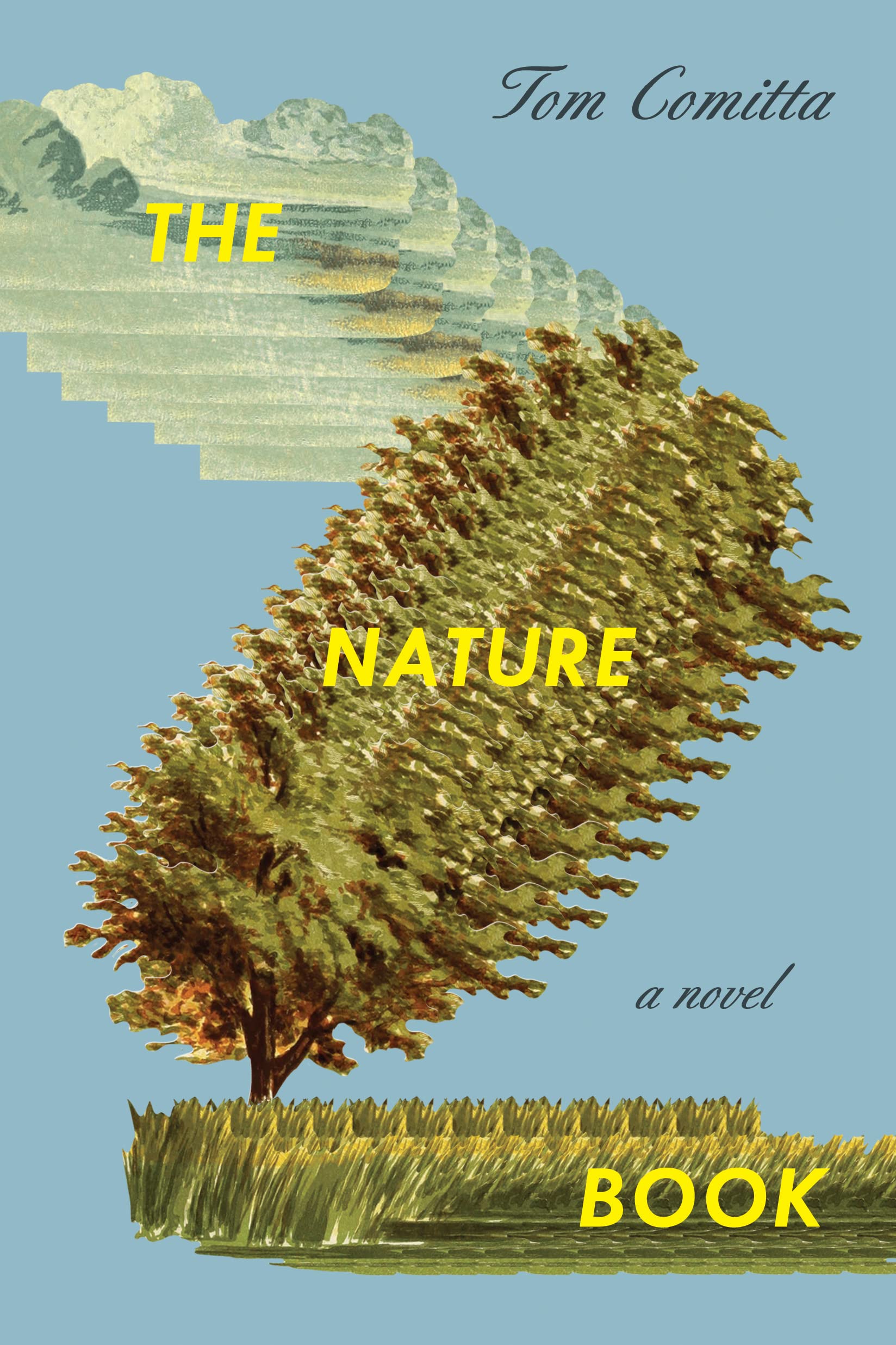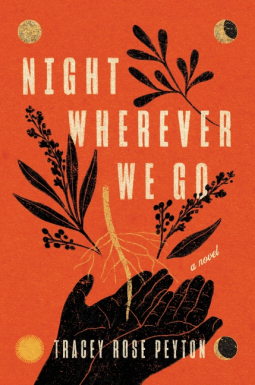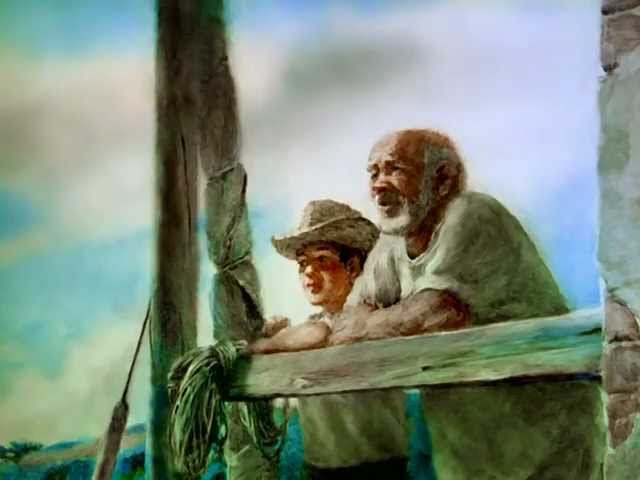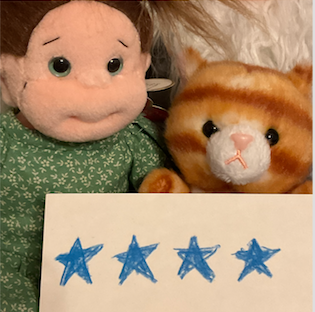In 2020, in my old Manhattan neighborhood, baby geese stalked their parents, strengthening their waddle. I in turn stalked them, grief-stricken over a recent death. Most days, the goslings with their hazy down went unobserved, except by me. I decided it was nature recalibrating now that we were out of the way. Really, it was April. Time marched on.
Two dolphins did make it into Venice’s canals in 2021; they were terrified and swam in frantic circles, as if they were signaling for help to something above. Maybe they had returned to their old waters, but they certainly hadn’t expected us to be there.
Tom Comitta’s The Nature Book (2023) is a novel focused on the living, breathing world, entirely devoid of people and, as Comitta’s preface declares, “contains no words of my own.” Instead, it consists of natural descriptions from over 300 novels, composed methodically and meticulously via subtraction and collage into a meditative, lush narrative on the relationship between time and nature. With us gone, the stage is set for “animals, landforms, and weather patterns that have buttressed human drama since the beginning of the novel form,” as an earlier version of the book described it.
Comitta refers to this genre (and composition process) as a “literary supercut,” a subgenre of citation fiction. In an essay for Lit Hub, they explain, “Literary supercuts are texts made entirely or almost entirely of found language. […] [W]hile a work of citational fiction might include ten to seventy percent found material, a literary supercut would contain ninety-five to one-hundred percent.” Citational fictions are common. Supercuts, on the other hand, are rare, laborious to create, and easy to spot, assuming the writer’s process is accessible.
Comitta’s published work in supercuts dates back to 2017, with Airport Novella, a collection of some of popular fiction’s most common physical gestures: nods, gasps, odd looks, and shrugs. The Nature Book, however, was in its drafting stages as early as 2016. An excerpt appeared in Los Angeles Review of Books in 2020. Two recent excerpts are featured in The Brooklyn Rail and LEAN, an online literary magazine “devoted to non-protagonist-centered fiction.” Comitta’s excerpt is in LEAN’s inaugural issue, a strong start for this niche magazine concerned with dimming the eternally spotlit “I.”
Comitta was directly inspired by the work of a friend and fellow artist, Kota Ezawa, who cut together a short video composed of nature scenes from over 20 feature films, each frame re-rendered with vector-based animation. This unified the images into one cohesive video, aiding its sense of narrative.
The project was titled City of Nature and installed in New York City’s Madison Square Park in spring 2011. While people sat around steel tables enjoying their Shake Shack, a story marked by their nonexistence—rivers flowing from one frame into the next—played across four different screens in a place designed to replicate the very thing we destroyed.
In their afterword, Comitta writes,
I wondered if this video was pointing to something pernicious about the process of framing life and flattening it into images. I wondered what a similar literary procedure might reveal about writing, language, and our relationship to nature.
Fans of the French Oulipo group will be familiar with the novel’s focus on developing literary constraints in order to create a work that, in Comitta’s words, is “both a narrative and an archive of how we think and write about nature.” There is tremendous pleasure in learning the author’s process, laid out in the afterword. First, because it highlights rather than masks the process (the feat!) of creating a book that’s equal parts narrative and concept art. A narrative is present, but it is not the end-all; you can appreciate The Nature Book as an object once you understand how it came to be. Second, because it is a different, more expansive way to conceive of the physical act of writing; understanding the process allows you to imagine what’s been cut out, rearranged, and, most interestingly, what inspired the work.
Comitta’s greatest constraint was to create a book that “collects nature descriptions from English-language novels since the beginning of the novel form.” From there, a series of smaller, more meticulous microconstraints followed. These allowed Comitta to further narrow the scope of their gathering process for the book’s contents.
An example of one such microconstraint: “A nature description can be as long as a few paragraphs or as short as ‘a tall tree,’” which allows for short, pitched, one-word sentences like “Cuckoo” and “Tuuu … tuu tu tu.”
Another: “The only modifications to the found language may be changes to capitalization, punctuation, and paragraph breaks,” which allows for a visual and linguistic representation of three lovely bullfrogs croaking in the night.
Yet another: “The text must adopt traditional modes of novelistic narrative, incorporating common fiction devices like narrative arc, rising action, falling action, and cliff hangers to shape these patterns into readable threads,” since, as Comitta reminds us, “[t]he goal was to write a novel, after all.” That is, a narrative arc with meaningful characterization and rich thematic resonance, free of people and their delightful baggage.
Reading The Nature Book alongside a more traditional novel (in this case, any novel concerned with people) cultivates a kinship between the wild and the societal. Nature in Comitta’s novel is sinister, joyful, cruel, clumsy, and daring, much like Proust’s Odette in Swann’s Way, the novel that served as my companion to The Nature Book. Comitta’s nature contains multitudes; it is mercurial and mysterious. Like our worst loves, nature is “seductive, never ceasing, whispering, clamoring, murmuring, inviting […] puissant and lonely.” Maybe there isn’t such a difference after all.
Like Proust, Comitta centers you in the reading experience, not just demanding your labor of comprehension at the languorous, long sentence level, but also requiring your attention and patience to stay with writing that doesn’t hurry, and characters—in Comitta’s case, birds and moons and clouds—whose rich interiority and nuanced observations replace a rapid plot.
Four sections make up The Nature Book: “I. The Four Seasons”; “II. The Deep Blue Sea”; “III. The Void”; and “IV. The Endless Summer.” The thematic categorization is reminiscent of commonplace books, mentioned in Comitta’s Lit Hub essay. These have been with us since the early days and serve as compilations of ruminations, aphorisms, quotes, or fragments on a subject or a theme: death, or etiquette, or the deep blue sea.
Like the commonplace book, The Nature Book is littered with shiny facts nestled in tender anecdotes on the subject of nature. It’s informative as much as it is entertaining. The growth of shoeflowers, memories of a once-empty ocean and how it came to be a crowded home, the flight patterns of a seagull—all of it permeates the book.
Unlike the commonplace book, however, a thread runs through all four sections, and though each is distinct enough on its own, they all thrive in concert. Weaving together the four seasons, the sea, land, and even outer space, Comitta illustrates that while we fight, love, sleep, weather death, and make friends, there is nature, doing much of the same, governed, as we are, by time.
Time is a recurring theme in the novel. “[A] form of sustenance,” the first section opens, “pleasant as the spring, comfortable as the summer, fruitful as autumn, dreadful as winter.” Depending on who you might encounter in the novel—a horse, a tree, flowers or birds or insects—time passes painfully or pleasurably through them.
In place of people, we often encounter animals and their struggles. In one chapter, a beaver works with her family to build their nest, working below a menacing sky and trying diligently to keep thoughts of enemies (bears, otters, turkeys) from her mind. After all,
This was her home, and nothing could drive her from it, neither loneliness nor the attack of otters nor the preying of wolves nor the flooding of the river. For the home of any living thing is important, both for itself and for the larger society of which it is a part.
As our beaver works, a wind has risen, and soon after, shadows are cast by rocks. The beaver notices a movement near a boulder, “a dark form,” and the chapter ends.
Those familiar with nature shows, which grew in popularity during the pandemic, will intuit the cliffhanger endings present in many of Comitta’s chapters. Netflix’s show Wild Babies tells the story of two, sometimes three different animals surviving in the wild over the course of a season. The cuts occur often on a beloved Wild Baby in a near-death situation, inexperienced. My masochism plateaued and I stopped watching after three episodes; who can bear so much crying?
The Nature Book maintains that same tension, sometimes lasting several chapters, and frames it in stark images, like “a shower of dead birds” after “a unique and horrific situation,” which arrives in the form of a thunderstorm at the beaver’s door. The reader is reminded of nature’s cyclicality as consolation. Time adjusts for grief and joy alike. Characters good and bad thrive and die and it is as it should be.
Poets and prose writers will find the novel instructive from a craft perspective. The language constructs a voice and tone that are consistently lush and inspiring, imagistic and lyrical. Passages such as this are as common as sparrows:
Eyes opened wide upon the glorious golden shaft of sunlight shining through the great clouds that sailed in masses. Light slanted, falling obliquely. Here, it caught on the edge of a cloud and burnt it into a slice of light, a blazing island on which no foot could rest.
I would graze the beginning of a chapter just to read for awe and wonder, the way my boyfriend keeps Hiroshi Sugimoto’s Seascapes on his end table to skim on shitty days. You’ll be hard-pressed to find another book with as verdant an archive of beautiful descriptive sentences as the one contained in The Nature Book.
The novel’s narrator (Time? God?) is omniscient, looking out and in, attentive as much to an atom (“[u]rged forward, caught in the mad whirl of particles”) as to “the most singular and beautiful object in all this scene […] the sea.” Comitta peppers the novel with asterisked footnotes, which function as asides to the reader.
The footnotes range in voice from biblical (“the Arm of the Lord puts a stranglehold of frost on the woods so tight it freezes all the way”) to singsong (“there’s that gnarlybird ygathering, a runalittle, doalittle, preealittle, pouralittle, wipealittle, kicksalittle, severalittle, eatalittle, whinealittle, kenalittle, helfalittle, pelfalittle gnarlybird”) to irate (“How many more nights and weird mornings can this terrible shit go on? […] The Universe is a junkyard […] Earth is stupid too”) and even lewd (“Flowers are fucked into being between the sun and the earth”). In the tradition of true marginalia, the footnotes spruce up the pace of the page and offer a different perspective. Varied and strange, they serve as reminders of the archivist, the composer, the creator.
Of their next project, a supercut novel about a jilted lover searching for a snuff box, Comitta writes, “[Patchwork] collects all the patterns I found while working on The Nature Book. Expect comedy, horror, choose your own adventure, and chapters made entirely out of collaged illustrations.” (An excerpt is available in the winter 2023 issue of Kenyon Review.) Comitta is prolific, and through their process-focused approach to the novel, we are watching this genre blossom in the open landscape of literature.
¤
Darina (Dasha) Sikmashvili was born in Lubny, Ukraine, and raised in Brooklyn, New York. Her recent writing appears in The Common and Fence, among others. www.sikmashvili.com



